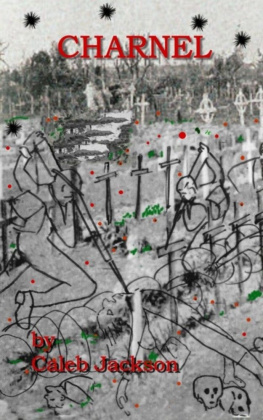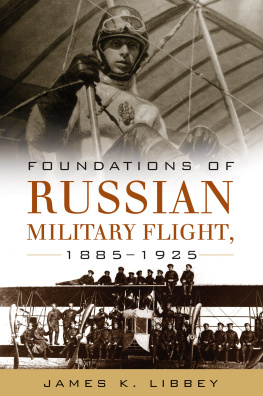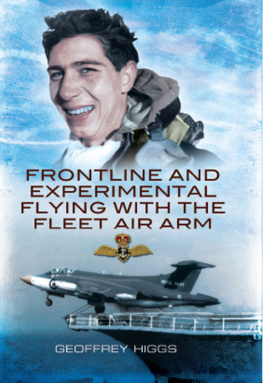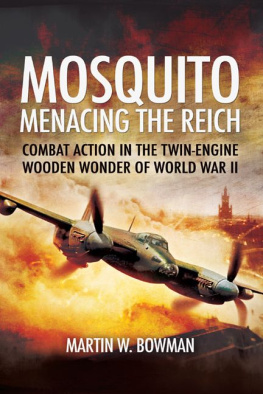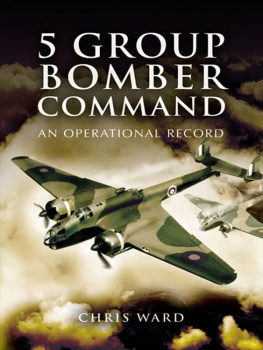
First published in
Great Britain in 2005
By Pen and Sword Aviation
An imprint of
Pen and Sword Books Ltd
47 Church Street,
Barnsley,
South Yorkshire
S70 2AS
Copyright Robert Jackson 2005
ISBN 1-84415-172-7
eISBN 9781844687534
The right of Robert Jackson to be identified as the Author of this Work has been asserted by him in accordance with the Copyright, Designs and Patents Act 1988.
A CIP record for this book is available from the British Library
All rights reserved. No part of this book may be reproduced or transmitted in any form or by any means, electronic or mechanical including photocopying, recording or by any information storage and retrieval system, without permission from the Publisher in writing.
Typeset in 10/12pt Palatino
by Mac Style Ltd, Scarborough, N. Yorkshire
Printed and bound in Great Britain
by CPI UK
Pen and Sword Books Lieutenantd incorporates the imprints of Pen and Sword Aviation, Pen and Sword Maritime, Pen and Sword Military, Wharncliffe Local History, Pen and Sword Select, Pen and Sword Military Classics and Leo Cooper.
For a complete list of Pen & Sword titles please contact
PEN & SWORD BOOKS LIMITED
47 Church Street, Barnsley, South Yorkshire, S70 2AS, England
E-mail: enquiries@pen-and-sword.co.uk
Website: www.pen-and-sword.co.uk
C ONTENTS
C HAPTER O NE
Death Over the Trenches: the BE.2
T he Albatros Scout cruised high over the front line, its young pilot eagerly scanning the drab, churned-up earth beneath, searching for the tell-tale flicker of movement that would betray the presence of an Allied reconnaissance aircraft. It had been several weeks since he had joined the famous Jagdstaffel 2 Boelcke, and he had yet to score his first victory, a fact that caused him some frustration, surrounded as he was by some of Germanys top fighter pilots.
Now, on this morning of 27 November 1916, he was to have his chance at last. Just as he was about to go home, he sighted a British biplane, a couple of thousand feet lower down. Diving to the attack, he opened fire and saw his bullets ripping into the biplanes wings. The aircraft went down in a fast descent, its pilot apparently intent on getting down in one piece before the German shot him out of the sky. It crash-landed in no-mans land quite close to the British lines. The pilot and observer jumped from the cockpit and ran to the comparative safety of their own trenches. The German pilot circled overhead, raging. Since the biplane had come down outside German territory, there was no way of claiming it as a kill; the German infantry who had occupied that particular sector had pulled out early that morning, and consequently there would be no witnesses.
Quickly, the young German decided on a drastic course of action. Thottling back, he glided down to land among the shell craters and came to a stop a few yards from the wreck of the British machine. Jumping down, he ran through the clinging mud and scrambled onto the biplanes splintered wing. He reached into the rear cockpit and pulled the machine-gun from its mounting. Burdened by his trophy, he stumbled back to his aircraft and threw himself into his seat, dragging the machine-gun with him. Mud sprayed up behind the wheels as he opened the throttle. Bullets crackled around him as the Albatros lurched into the air, but miraculously none struck home. That night, the machine-gun was mounted in the officers mess of Jagdstaffel 2.
The German pilot was Leutnant Werner Voss, soon to become legendary as the Hussar of Krefeld, whose score of enemy aircraft destroyed would rise to forty-eight before his death in action in September 1917.
Vosss first victim, on that day in 1916, was a Royal Aircraft Factory BE.2c. It was an aircraft that was easy to fly; it had no vices; and it was inherently stable in flight. In combat, it was a death trap.
In 1909, HM Balloon Factory at Farnborough, which as its name implies had been involved in the production of lighter than air craft, began building aeroplanes. In 1912 the company changed its name to the Royal Aircraft Factory. Its first aircraft product, built in 1911, was the BE.1 (Blriot Experimental) tractor biplane, which was first flown on 1 January 1912. The pilot was 30-year-old Geoffrey de Havilland, who had joined the Balloon Factory in 1910. The rather curious Blriot Experimental designation was a smokescreen to cover up the fact that the aircraft had been designed by de Havilland and to give the impression that it was a repaired Blriottype machine, for at that time the Balloon Factory was authorised to carry out repair work only.
The BE.1, which was built around a Wolseley engine, was quite an innovative design. It was followed by the BE.2, which used the same basic airframe and was the first military machine to be built as such in Britain. The BE.2 was one of the first successful attempts at building a fuselage biplane with a tractor engine driving a four-bladed propeller. The wings were of two-spar structure, supported by two pairs of struts on each side. The fuselage was rectangular in cross-section with curved top decking, the pilot and observer being seated in tandem. The elevator and rudder were of metal construction with fabric covering. The BE.2 was powered by a 70 hp air-cooled Renault engine and, like the BE.1, it was used to carry out a great deal of trials work. Four BE.2s were ordered by Vickers, and the Royal Aircraft Factory was authorised to build another five.

The BE.2a, also known as the Army Tractor Biplane, was Britains first truly successful military aircraft design.

Much of the experimental work with the BE.1/BE.2 involved improving the types stability, a characteristic that was to prove its Achilles heel; but this was something which, until the BE found itself in a combat situation, no one could have envisaged. The unit that pioneered the BEs entry into service with the Royal Flying Corps (RFC) was No. 2 Squadron, one of the RFCs first heavierthan-air units (No. 1 Squadron being equipped with balloons and airships at this time). The RFC pilots liked the BE, and No. 2 Squadron crews faced a stern test in January 1913, when they were ordered to deploy from their original base at Farnborough to Montrose, on the east coast of Scotland.
An official history of the RFC records:
Five of its officers did the journey in nine days, two of them in BEs and three in Maurice Farmans. They took off on the 17 February, and that evening Lieutenant C.A.H. Longcroft, having been compelled to land at Littlemore, near Oxford, spent the night in the local lunatic asylum. The next stop was Newcastle. Only two of them reached it in the day and these had had to land many times to ask the way. The directions they received were more suitable for land than air travellers, since turnings in the road and well-known public houses are not easy to recognize from the air. By the 26 February they had all arrived at Montrose, and here a period of strenuous training began. By September they had advanced sufficiently to take part in the Irish Command manoeuvres, flying 400 miles each way to do so with no engine failures.
When the RFC deployed four squadrons and sixty-four aircraft to France on 13 August 1914, a few days after the outbreak of war, two of them (Nos 2 and 4), were equipped entirely with BEs. By this time, new models of the basic design had made their appearance, production having given way to the BE.2a with wings of unequal span; the BE.2b with revised decking around the cockpits and ailerons instead of wing-warping controls; and the BE.2c.
Next page




